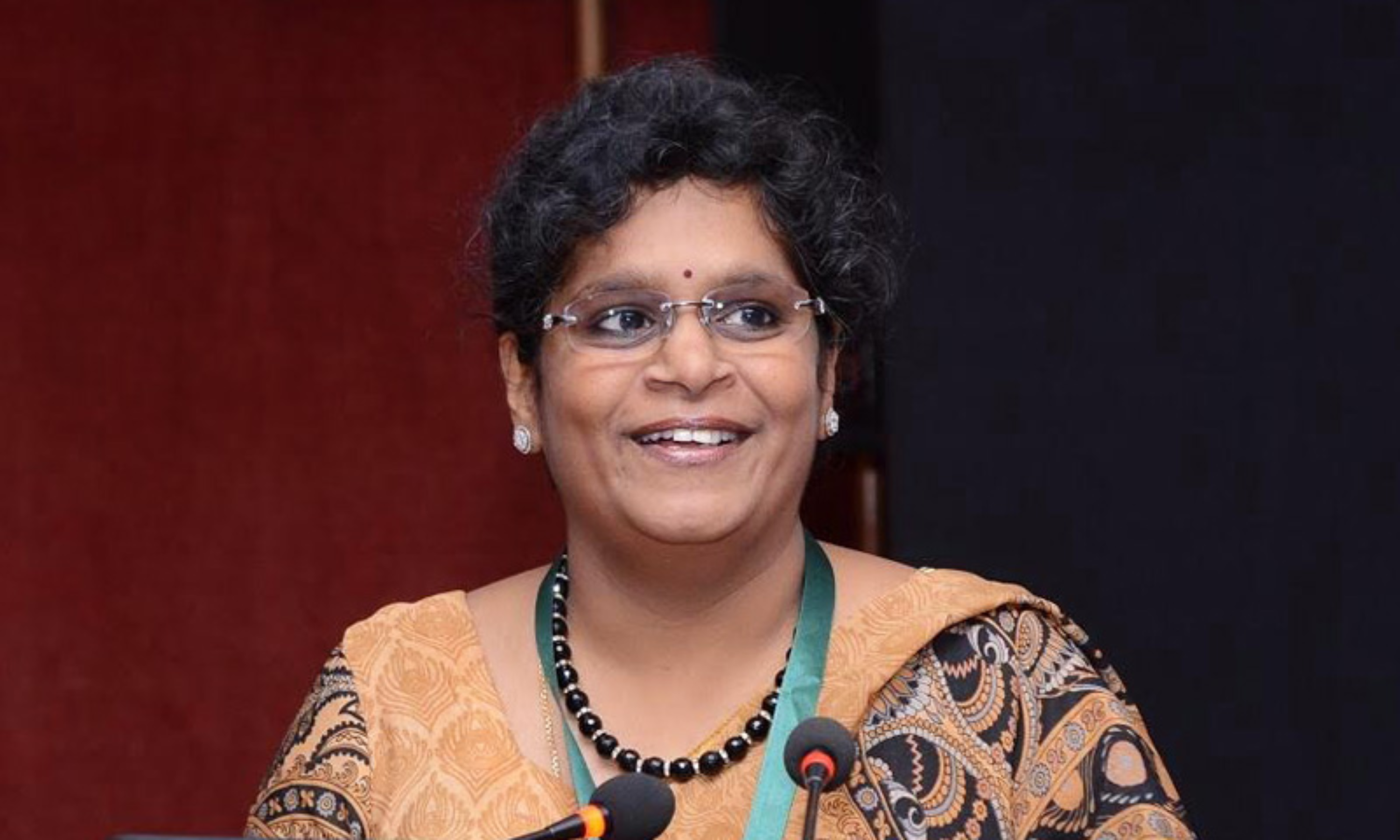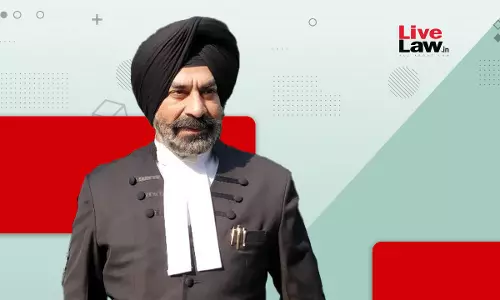'Legal Framework Around Blockchain Technology Applications'- Justice Prathiba Singh

In ancient times, when democratic societies were yet to evolve and provinces were ruled by chieftains or local kings, messages that were to be conveyed from one king to another king or from one chieftain to another, were sent through a series of messengers. The recipient of the message would first check the authenticity of the message and verify the genuinity of the messenger by...
In ancient times, when democratic societies were yet to evolve and provinces were ruled by chieftains or local kings, messages that were to be conveyed from one king to another king or from one chieftain to another, were sent through a series of messengers. The recipient of the message would first check the authenticity of the message and verify the genuinity of the messenger by asking for a code. It is only if the messenger was able to give the correct code that the message would be treated as being authentic.
In modern society, such authentication and verification is used in defence establishments, intelligence operations and in investigative agencies by using different types of codes and keys. This code and key combination has also found its application in the dark web where it is used by unscrupulous elements for trading of arms, drugs, or even hawala transactions.
The conversion of this real world code-key function for the purposes of verifying and authenticating transactions on the internet by using a series of entries in a ledger is the basis of Blockchain Technology ("BT"). The said technology of which the audience here has greater knowledge, today is used for various transactions. It is common knowledge that bitcoin and other forms of cryptocurrency are based on blockchain technology. Without going into the technical aspects, suffice it to say that this technology is now being used in various banking and finance related applications. Its use has also expanded into the insurance industry. Estimates suggest that there are more than 100 million users of BT worldwide.
Apart from banking and finance related industries, blockchain technology is also being explored/used/developed for purposes of various applications and implementations such as issuance of birth certificates, tracking of convicts, maintenance of land records, streamlining of transactions relating to vehicles, and even for the purposes of maintenance and growth of tree saplings. Several states such as Andhra Pradesh, Delhi, Karnataka, Jharkhand, Maharashtra, Telangana, Tamilnadu and God's own country – Kerala have announced policies for integrating BT in governance.
One cannot claim an in-depth knowledge of this complex technology. However, from a legal point of view, blockchain technology raises several questions in one's mind.
Firstly, blockchain transactions have no borders and hence, jurisdiction is a vexed issue. Where and how a dispute can be raised remains an unanswered question. Blockchain technology depends upon public and private keys allotted to users and their interface with the hash function. Transactions conducted through blockchains have a sense of permanence. Though verification and authentication is the fulcrum of this technology, there is no means of enforcing a transaction in a court of law. Mistakes cannot be corrected and hence, the jurisprudence under the Indian Contract Act, 1847 relating to mistake of fact or law is wholly alien to these transactions. How is one to be held to a promise made in an entry in a ledger? When does the promisor and the promisee relation get established? These are all questions for which answers would have to be found.
What happens if a private key is misused or tampered with? Are there any legal remedies? One doesn't know. There is no central authority which monitors BT, however, recent adaptations of BT are being used by governmental authorities for verifying and authenticating ownership of moveable/immovable assets. What are the responsibilities of such an authority? Is there any threat to privacy of the users, especially when there is possibility of leakage of data or hacking of data?
A defining moment for BT in India was the judgment of the Supreme Court in Internet and Mobile Association of India v. RBI [Writ Petition (Civil) No.528 of 2018, decided on 4th March, 2020] which set aside the ban imposed by the Reserve Bank of India ("RBI") on bitcoins and other cryptocurrencies. A perusal of this judgment would show that the Court was mindful of various aspects including the fundamental rights of persons involved in dealing with bitcoins. The Court clearly held that while regulation of this trade would be within the domain of the RBI, banning of the same would be violative of fundamental rights. The budget speech[1] of the then Finance Minister finds reference in the judgment. He had said –
"The Government will take all measures to eliminate the use of crypto-assets in financing illegitimate activities and will also explore the use of blockchain technology for ushering in digital economy."
The announcement of use of BT proactively for ushering in the digital economy marked the arrival of this technology on the national stage. The Supreme Court found that the RBI's acceptance of BT and rejection of cryptocurrency was actually a paradox.
Another important aspect of BT is the prescribing of standards. There are no globally acceptable standards, either governmental or non-governmental, for the purpose of creating BT applications. In the absence of standards, BT is also being used in the dark web for indulging in criminal activities, such as the sale of arms, drugs, terrorist activities, funding of terrorism etc. For BT to be a technologically viable, acceptable and easily usable technology, various steps would need to be taken at an international and national level for creation of global standards for the creation, use and implementation of BT.
Let us rewind a little. At the beginning of the internet, apprehensions about the manner in which it would work were raised in almost all quarters. However, various tools were employed to ensure that the internet operates in a structured manner. While content on the internet is not regulated, the architecture of the internet has been clearly defined. The role of private individuals and organizations, as also commercial enterprises in creating this structure has been commendable. Whether it is the governance of the ICANN, participation in ICANN related activities, licensing of Registrars for domain names or adjudicatory mechanisms such as online disputes resolution through UDRP – the path has been laid and it is effectively working. The biggest achievement of the internet is that it is being regulated without actually being regulated by any governmental authority. There is accountability and answerability to a major extent, though owing to the complex issues, it is always a work in progress.
Similarly, for Blockchain Technology to succeed and to enjoy legitimacy, the first and foremost requirement would be for laying down standards within which the technology ought to operate. All players and stakeholders ought to be consulted at an international level to lay down the said standards. Unregulated BT can pose enormous risks, especially in the banking and finance sector. The recognition of BT and applications based on BT which are not involved in illegal, nefarious or unlawful activities would be the first step in ensuring that the technology is sustainable.
There are various positive uses to which Blockchain Technology can be put. Each of us is aware of the number of times we have to submit our identification cards, education certificates and such related documents for even the smallest of functions such as opening of a bank account. The sheer manpower and time which is spent in submission, verification and authentication of such documents separately in each and every organisation can be completely eliminated by using BT. The submission of one identification should mean automatic authentication and verification of all data relating to the said individual. This can be achieved through BT without compromising privacy. Similarly, verification of banking transactions of an individual across multiple bank accounts could also be made easier with BT. E-commerce transactions, insurance, could all be meshed together. The power of mathematical applications in the collection, authentication, verification and use of large amounts of data can be realised with Blockchain Technology.
BT can also have various applications in the legal field, especially in the streamlining and simplification of transactional work. Smart contracts, for instance, could be used to automate payment in transactions involving delivery of goods, upon satisfaction of certain conditions. Lawyers could also use BT to store confidential data instead of emailing sensitive personal data back and forth. Transactions conducted using BT may result in contractual disputes, consumer disputes or even disputes under the Negotiable Instruments Act, 1881. There is no mechanism to deal with them at this point.
Coming to Intellectual Property, there are two dimensions of blockchain technology – (1) Whether innovations in Blockchain technology are entitled to any form of protection and (2) if so, who owns the rights in Blockchain applications and implementations?
Blockchains, which are a large conglomeration of data, could be construed as literary works under the Copyrights Act, 1957. The foundation of this technology being computer software, various jurisdictions in the world also grant patents for most of the innovative implementations of BT. Companies such as IBM, MasterCard and Bank of America own several patents in BT. However, the question arises as to whether Blockchain technology applications are even patentable?
In India, patent applications based on blockchain implementations could be faced with objections under Section 3(k) of the Indian Patents Act, 1960. In the judgment of Ferid Allani v. UOI & Ors. [W.P.(C) 7/2014, decided on 12th December, 2019], the Delhi High Court had the opportunity to consider computer programme based inventions and in that context, it was observed –
"that the bar of 3(k) is not on all inventions based on computer programs. In today's digital world, when most inventions are based on computer programs, it would be retrograde to argue that all such inventions would not be patentable. Innovation in the field of artificial intelligence, blockchain technologies and other digital products would be based on computer programs, however the same would not become nonpatentable inventions – simply for that reason. It is rare to see a product which is not based on a computer program. Whether they are cars and other automobiles, microwave ovens, washing machines, refrigerators, they all have some sort of computer programs in-built in them. Thus, the effect that such programs produce including in digital and electronic products is crucial in determining the test of patentability. Patent applications in these fields would have to be examined to see if they result in a `technical contribution.' The addition of the terms `per se' in Section 3(k) was a conscious step and the Report of the Joint Committee on the Patents (Second Amendment) Bill, 19991 specifically records the reasons for the addition of this term in the final statute as under:
"In the new proposed clause (k) the words "per se" have been inserted. This change has been proposed because sometime the computer programme may include certain other things, ancillary thereto or developed thereon. The intention here is not to reject them for grant of patent if they are inventions. However, the computer programmes `as such' are not intended to be granted patent. The amendment has been proposed to clarify the purpose."
Historically, the insertion of Section 3(k) took place with the 2002 amendments. A Joint Parliamentary Committee, which considered the Patents (Second Amendment) Bill, 1999 observed that computer programmes per se are not patentable. The Committee observed that the words per se, which were absent in the 1999 bill, be added to ensure that such patent applications which relate to computer programmes also consisting of other things ancillary thereto or developed thereon are not rejected. The Committee held that this amendment was clarificatory. This was followed by the Statement of Objects and Reasons for the 2005 amendment which clearly provided that when software related inventions have technical application to industry or are in combination with hardware, the bar would not apply.
One author[2], has recently opined in the context of Section 3(k), that addition of the words `per se' being clarificatory, in effect, means that even insofar as business methods, mathematical methods or algorithms are concerned, the words 'per se' would apply. Any clarificatory insertion is merely by means of abundant caution. Thus, business/mathematical methods per se, algorithms per se and computer programmes per se would not be patentable. The author opines:
"The correct approach:
One possible resolution to the issue is to recognise that the suggestion by the Joint parliamentary committee to include the term "per se" to computer programs was only to `clarify the purpose' – something that is expressly noted by the Joint Parliamentary Committee. If it is clarificatory and therefore, inserted ex abundanti cautela, its absence qua the other subjects covered by the provision does not signify much.
If that is so, perhaps, it may not be entirely unreasonable to draw mileage from the 2005 Statement of Objects and Reasons even when it concerns the other items in s. 3(k). The EPC applies the same approach as computer programs for the other exclusions covered by the same provision. Such a view also bodes well with the Parliamentary intent of treating all these exclusions as related/cognate items.
Therefore a reasonable test to employ even for mathematical methods, business methods and algorithms would be to examine whether they have "technical application to industry" and are in "combination with hardware". As a matter of practicality, though, it is difficult to envisage how a "business method" would qualify the "technical effects" requirement."
The application of `per se' in respect of other categories of inventions mentioned in Section 3(k) is not yet judicially settled in India. However, the fact that the words per se derive their inspiration from Article 52 of the European Patent Convention which uses the term 'as such' is not in doubt. Internationally, the law that has developed in different jurisdictions including UK, USA and EU is that if software programmes have a technical effect or technical contribution or when used in combination with hardware, produce an innovative result, patents can be granted.
A question that arises in everyone's mind is that can a blockchain technology patent application be granted in India? There cannot be a definitive yes or no. It depends on the nature of the invention, its application, what is the technical contribution made by it or whether in combination with a hardware it produces a completely new result. The question, as to whether specialized hardware would be required or general purpose hardware is sufficient, has also arisen in some cases. However, it is generally accepted that specialized hardware may not always be needed. This is also made clear by the Statement of Objects and Reasons of the 2005 amendments, as also the report of the Joint Parliamentary Committee.
The question as to who would own the IP would also be a vexed question as it would depend on the contractual arrangements between the developers and the entities who are getting the development done. Section 17 of the Copyright Act, 1957 would also come into play as to whether development is under a contract 'of service' or contract 'for service'. Like in any other technological development, inventors are always human beings and the owners could be corporate entities. The questions that arises as to the ownership of IP in blockchain technology, are not very different from those that arise in relation to computer software based inventions.
There are other dimensions of blockchain technology which may be covered under the recent data protection legislation - Personal Data Protection Bill, 2019, which is in the pipeline. The IT Act, 2000 defines 'data' and related terminologies. The susceptibility of hacking, tampering or misuse would fall in the domain of the IT Act, 2000.
The draft Banning of Cryptocurrency Bill, 2019 would be a legislation to watch out for. Use of blockchain technology for various purposes such as research, education etc., is legal as per the Bill. A digital rupee is also contemplated. Various countries around the world such as Japan and Australia have legalized bitcoins and other digital currencies. However, regulatory agencies keep a watch over such currency exchanges. The path that India is to take is a question of policy. However, the positive implementations and applications of blockchain technology cannot be ignored and ought to be recognised and used.
Technology is like water. Its flow cannot be stopped. Only dams can be built to make use of its power for the benefit of mankind. Blockchain technology is no exception to this analogy. The technical aspects of blockchain technology need not be understood by one and all. It is a technology which helps in the authentication and verification of transactions and gives them a sense of permanence. The technology is here to stay and in the legal world, we have to only learn to deal with it and use it for the benefit of the people.
I commend the IIITM Kerala, for the creation of the Kerala Blockchain Academy and for organising such events which would spread awareness of this technology.
Presented at BlockHash Live 2020
organised by the Kerala Blockchain Academy, 12th December 2020
[1] Finance Minister Mr. Arun Jaitley's Budget speech given on 1st February, 2018
[2] See Para 2, page 613, Chapter 7 `Patent law cases and materials: A synthesis for India' by Adarsh Ramanujan, September 2020, Wolters Kluwer.




